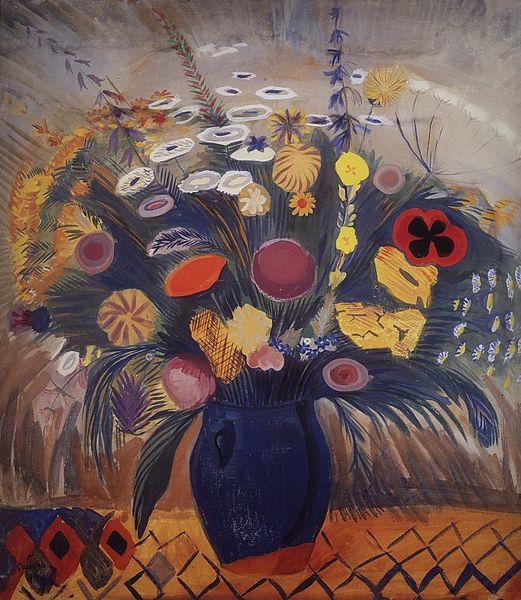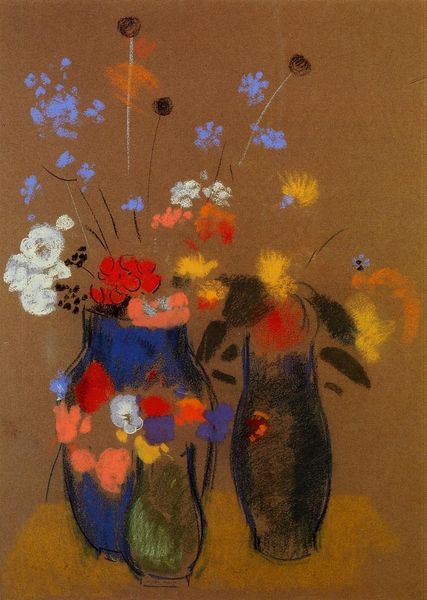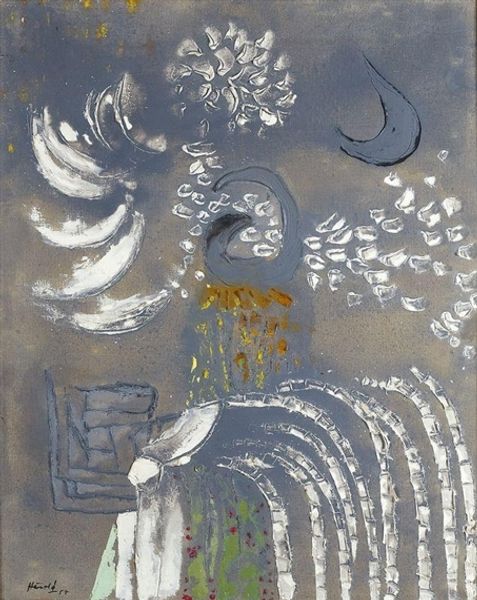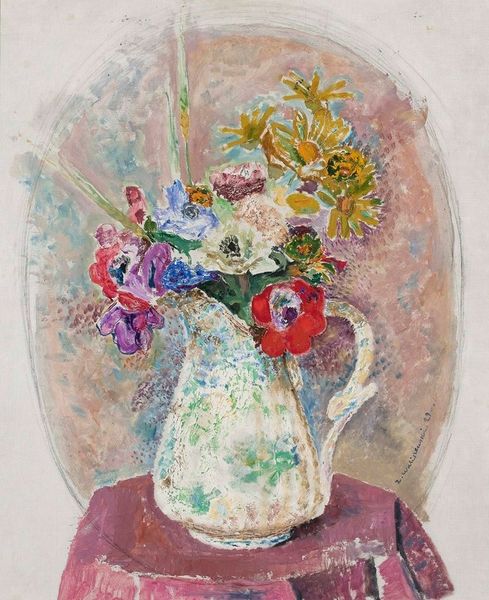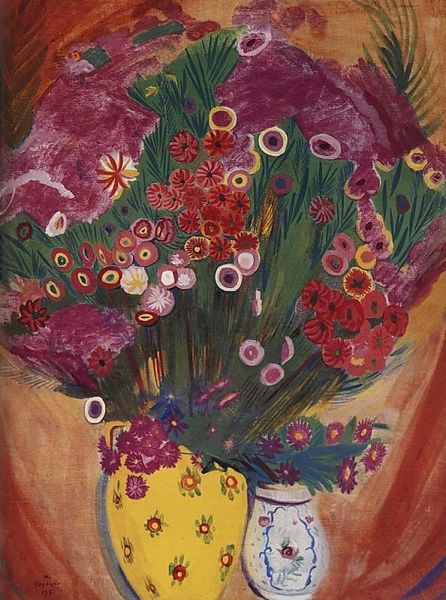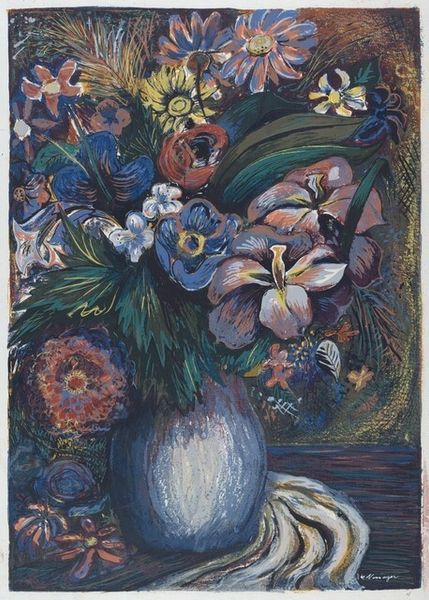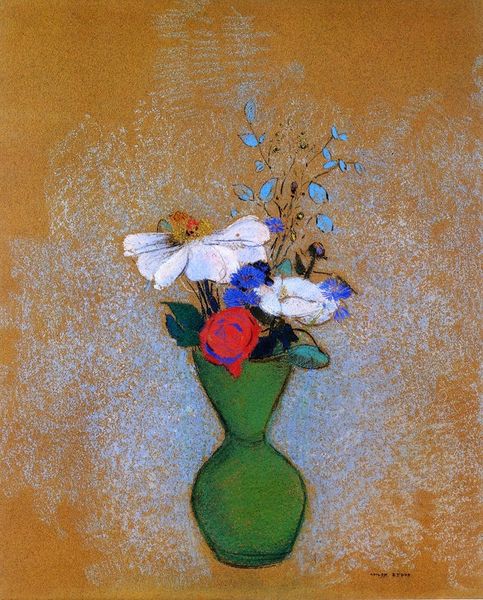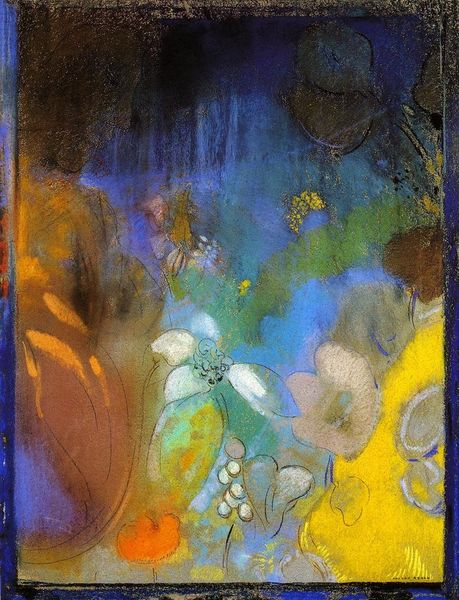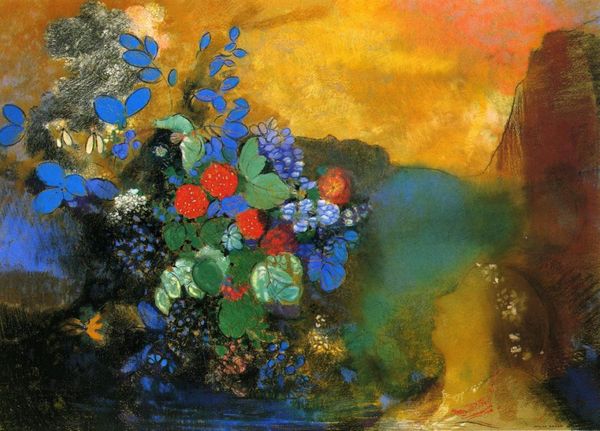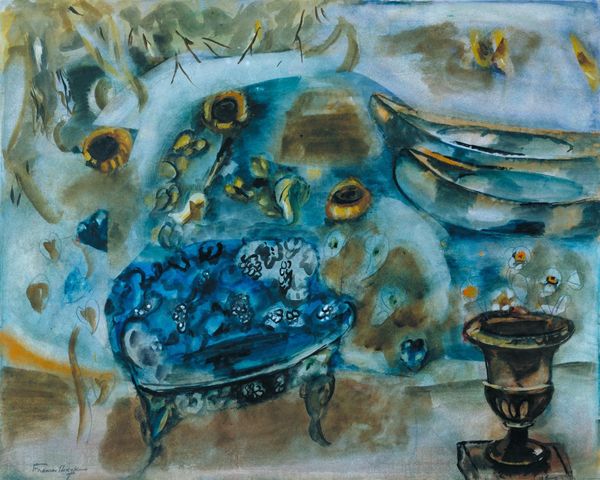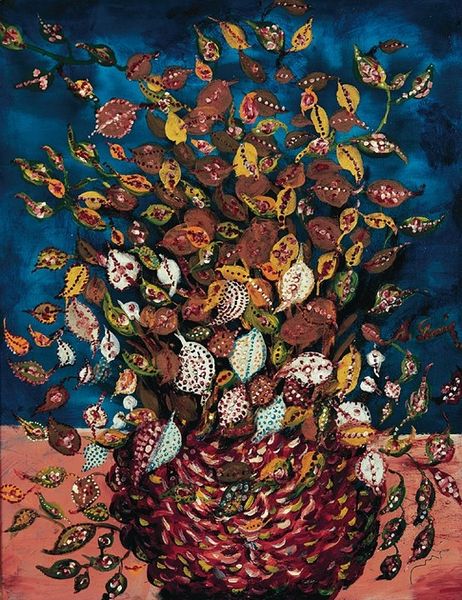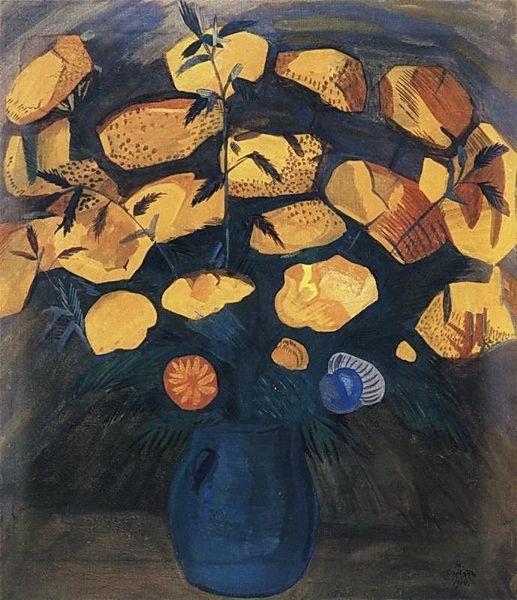
painting, oil-paint
#
organic
#
painting
#
oil-paint
#
figuration
#
oil painting
#
intimism
#
symbolism
Copyright: Public Domain: Artvee
Curator: We’re looking at "Etruscan Vase with Flowers" by Odilon Redon, dating from between 1900 and 1910. The medium here is oil paint on what looks like a relatively small canvas. Editor: My first impression is dreamlike and slightly unsettling, a feeling of warmth emanating from a rather chaotic scene. Curator: Absolutely. Redon often engaged with themes of the unconscious, and we see a deliberate blurring of lines here. The very title calls attention to history—an “Etruscan” vase—yet the treatment of flowers and background feels so contemporary, resisting straightforward representation. One could even argue it’s a critique of the established artistic traditions and the masculine spaces in which these styles were historically consumed and validated. Editor: The vase itself acts as an intriguing vessel, adorned with silhouetted figures echoing ancient friezes. Vessels and flowers appear so often throughout cultures as potent symbols of fertility, and fleeting beauty, carrying coded implications depending on place, time, or cultural background. Curator: Precisely! And Redon complicates things by disrupting the classical associations we might expect. Look at his rendering of the flowers: they appear as floating shapes, less grounded in reality than expressions of internal states. There's also the peculiar butterfly clinging to the side; these symbolize transformation, and freedom, however, they feel slightly entrapped. Is Redon alluding to ideas surrounding the restraints on the feminine and natural worlds? Editor: Good point about the butterfly. There is something both beautiful and melancholic about this composition; the darkness and subdued colours could symbolize life and death and, ultimately, the brevity of beauty in our world. I’m also reminded that butterflies, especially, undergo a period of dark incubation prior to their beautiful unveiling. Curator: Indeed. He provides no easy answers. Perhaps his Symbolist approach gives way to contemporary anxieties about the dawn of modernity at that turn of the 20th century. Editor: Absolutely, a complex web of art historical traditions blended with subjective visual experience that lingers long after viewing.
Comments
No comments
Be the first to comment and join the conversation on the ultimate creative platform.
